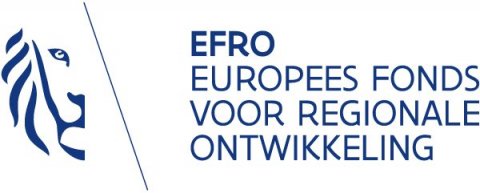EFRO projects
Country estates as examples of a 'Flemish National Trust' (2011-2013)
Over the last few decades large landowners in Flanders have found it increasingly difficult to maintain their properties with private money with the result that a growing number of them are opting to sell up. The owners of Hof Ter Laken, Roosendael, Hof Ter Linden and Hof Ter Borgth were among those finding the upkeep of their properties a difficult challenge. Given that country estates are the pearls of the landscape and opening them up for the community invariably creates added value, town councils asked Kempens Landschap to look at ways of retaining them for the community. To this end public-private cooperation proved necessary, and desirable. Indeed, cooperation between a private partner who restores a building and finds a new use for it, and public partners who look after the parkland and open it up to the public, creates a significant win-win situation. Parkland that is attractive as a leisure destination generates a greater influx of people and this is reflected in visitor payback. With that revenue the site can be maintained and its future secured.
By enhancing and opening up the grounds of the four above-mentioned country estates through this project, we were able to show that efforts in terms of protecting the landscape and making it accessible to the public can contribute to the long-term future of estates, not least from an economic perspective. So this pilot project shows how country estates could work as an example of a 'Flemish National Trust'.
Pure Kempen (2010-2013)
By branding Kempen tourism and recreational activities with an authentic character, the partners in this subsidized project were looking to stimulate the regional economy of the Kempen in a sustainable manner. They achieved this by promoting regional USPs and by reinforcing the local identity. After all, today’s visitors are more than ever looking for authenticity, a factor entrepreneurs can capitalize on. In that framework Kempens Landschap was at pains to strengthen the sense of community in two places typical of the Kempen. In Gestel, once the smallest village in the province and superbly situated along the River Nete, an evening event was organized. In the grounds of the former convent of the Franciscan nuns in Wuustwezel, the local identity was reinforced by regenerating the unspoilt landscape within the convent walls, restoring the Mary grotto and promoting public access.
Colonies in the Northern Kempen (2010-2011)
With the support of the European Regional Development Fund, Kempens Landschap improved the appearance of a number of gates to this landscape. For example, subsidies were acquired to remodel and open up the junction of the four buildings in Wortel colony, to repair the roof construction and renew the roof covering of the large farm in Merksplas colony and to remodel the playground of the school in Merksplas colony. We acted as promoter in this project, the development company Bouwmaatschappij De Noorderkempen and the municipality of Merksplas as co-promoters. All this was part of the plan to make the colonies attractive leisure and tourism destinations and to have them operate at supra-local level.
The colonies, crossing borders (2010-2012)
The colonies of Wortel and Merksplas are vestiges of the Society of Humanitarianism (Maatschappij van Weldadigheid). This institution was a typical exponent of the zeitgeist of the early 1880s when poor relief and benevolent initiatives were being introduced. The Society also left its legacy in the Netherlands with colonies in Frederiksoord, Wilhelmina-oord, Veenhuizen and Ommerschans. The humanitarianism heritage sites were beginning to go their separate ways, so we entered into a form of cooperation with Dutch partners to promote them as tourist destinations and to carry out specific tasks there, such as restoration, finding new uses for the buildings, recreation and landscape development. At the same time the partnership is working towards all the Society’s colonies gaining recognition as UNESCO world heritage.




